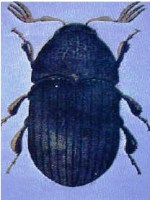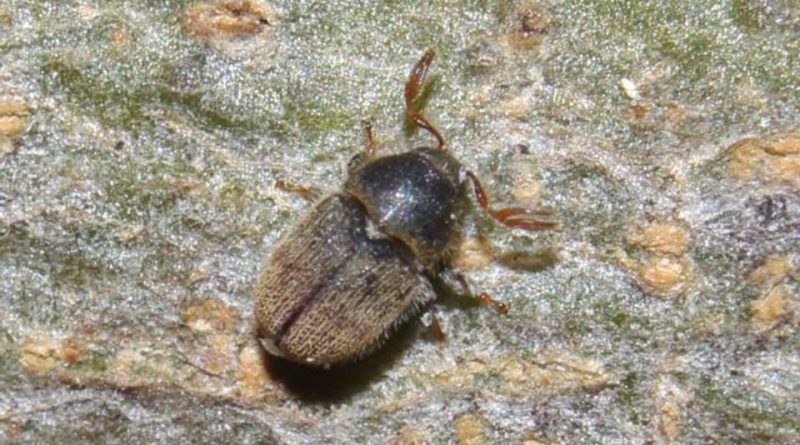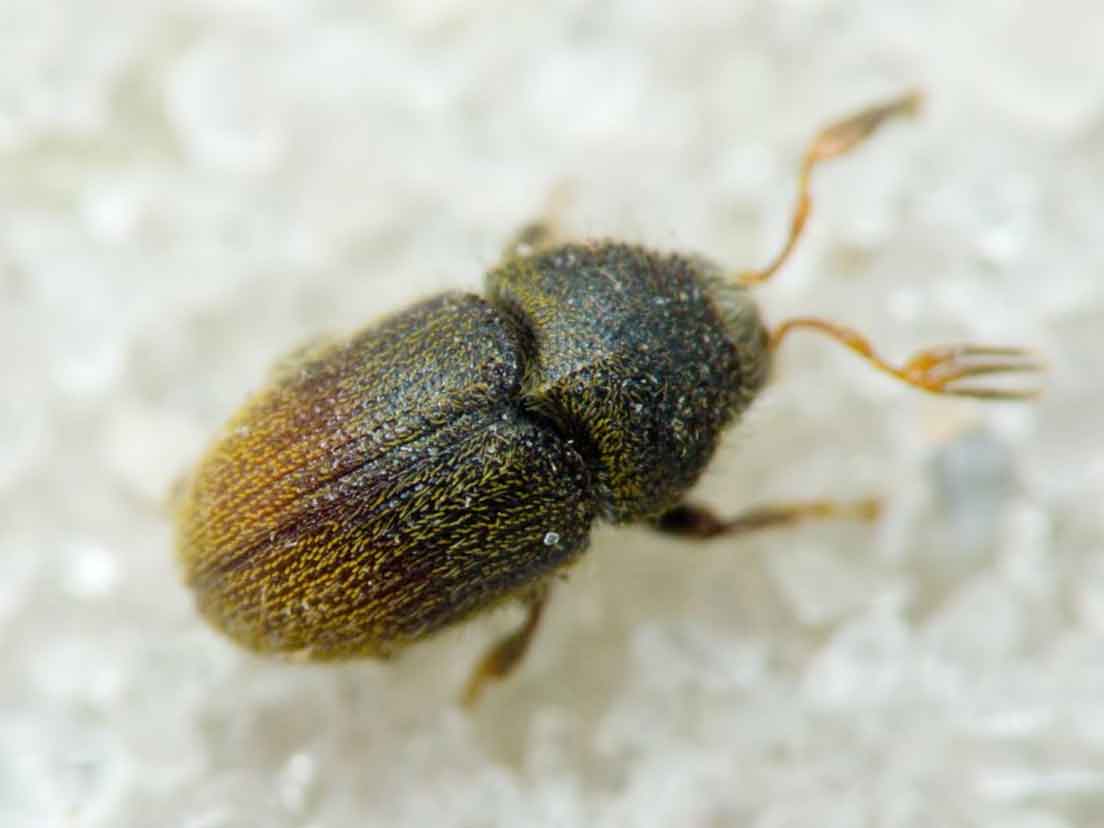|
|
| Phloeotribus Scarabaeoides |
| Olive trees protected from the olive bark beetle, Phloeotribus scarabaeoides (Bernard 1788) (Coleoptera, Curculionidae, Scolytinae) with a pyrethroid insecticide: Effect on the insect community of the olive grove. |
| Phloeotribus Scarabaeoides field studies were performed in two successive years, 2005 and 2006, in different olive groves of the province of Granada (South-eastern Spain) by spraying olive trees (Olea europaea) with a pyrethroid insecticide, deltamethrin, for the control of the olive bark beetle Phloeotribus scarabaeoides (Bernard 1788)(Coleoptera, Curculionidae, Scolytinae). |
|
 |
| Three olive groves received each year three treatments in June consisting of water (control) and two insecticide doses, which were halved the second year. |
 |
From June to September six olives trees per site were inspected every 15d for feeding galleries in olive branches; the arthropods, collected in traps placed below the olive trees (three traps per site), were identified and counted. Phloeotribus Scarabaeoides results show that feeding galleries were significantly reduced, what proves that the pyrethroid insecticide efficiently protected the olive trees from the olive bark beetle with a single application and even at the lower dose employed in 2006. |
|
| Some repellent effect may occur as deduced from the number of P. scarabaeoides individuals captured. Phloeotribus Scarabaeoides other individuals from the insect community were also affected to a great extent by insecticide application, though no statistical differences were found among the treatments due to the high variability in insect captures. |
| Among the parasitoids, Scelionidae, Encyrtidae, Eurytomidae and Pter malidae were captured in great numbers. Phloeotribus Scarabaeoides mirids were the predators whose numbers drastically increased in traps placed under the treated trees, while spiders and ants were less affected. A knock-down effect was noticed for some insect groups, for instance mirids and Euphyllura olivina Approximately 80% of their captures corresponded to the first date of sampling after insecticide application. |
 |
|
|
|
|

